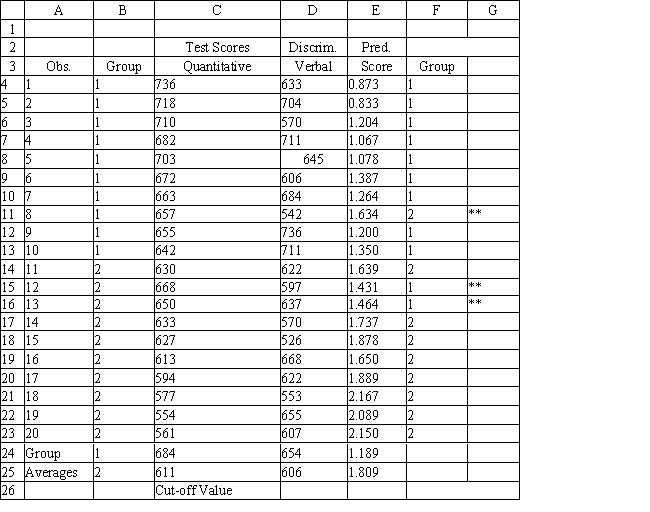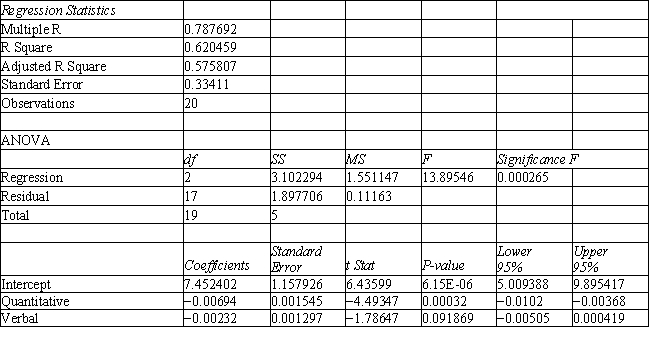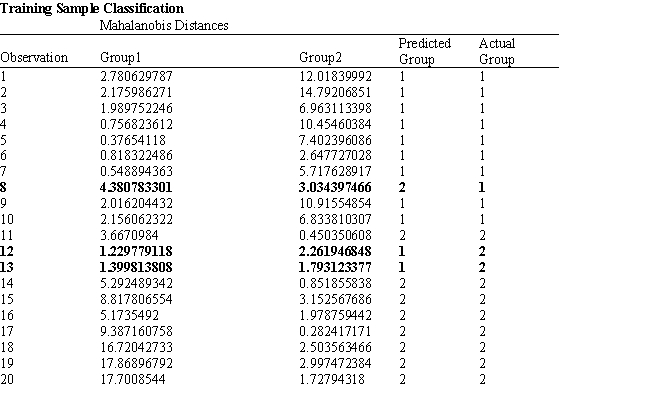Exhibit 10.1
The following questions are based on the problem description and the output below.
A college admissions officer wants to evaluate graduate school applicants based on their GMAT scores, verbal and quantitative. Students are classified as either successful or not-successful in their graduate studies. The officer has data on 20 current students, ten of whom are doing very well (Group 1) and ten who are not (Group 2) . 




-Refer to Exhibit 10.1. Suppose that for a given observation, the difference between Mahalanobis distances between group 1 and 2 (G1-G2) is big and positive. This means that
Definitions:
Compensating Balance
A minimum account balance that a borrower is required to maintain with a lender, which can reduce the effective amount of loan available to the borrower.
Cash Balances
The total amount of cash in a company's account at any given time, which can be used for transactions or as a reserve.
Receivables Financing
A form of financing where a company uses its outstanding invoices or receivables as collateral to secure a loan or advance.
Administrative Fee
Charges imposed by investment funds or companies to cover operational and management expenses.
Q2: The category of decision rules that contains
Q4: What is missing from transportation problems compared
Q17: Consider the following multi-objective linear programming problem
Q47: Solve the following minimal spanning tree problem
Q55: What are the objective function coefficients
Q60: A time series which has no significant
Q61: The Cell Value column in the Solver
Q71: A correlation coefficient<br>A)measures the strength of a
Q72: Refer to Exhibit 10.1.Suppose that for a
Q80: A company will be able to obtain